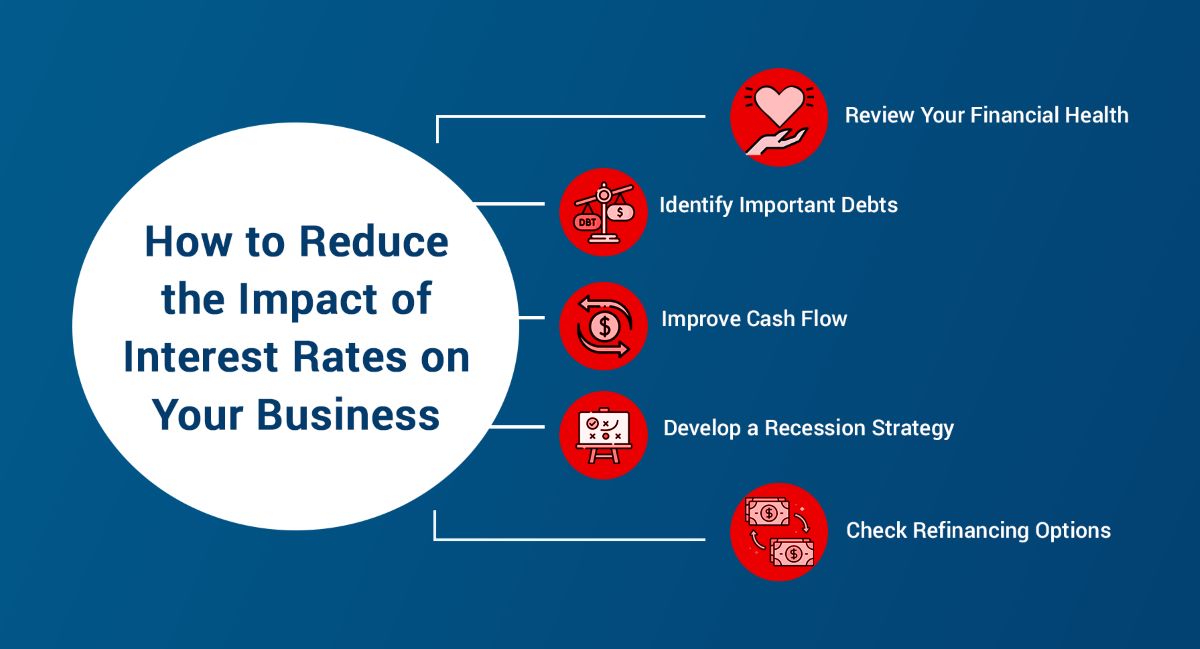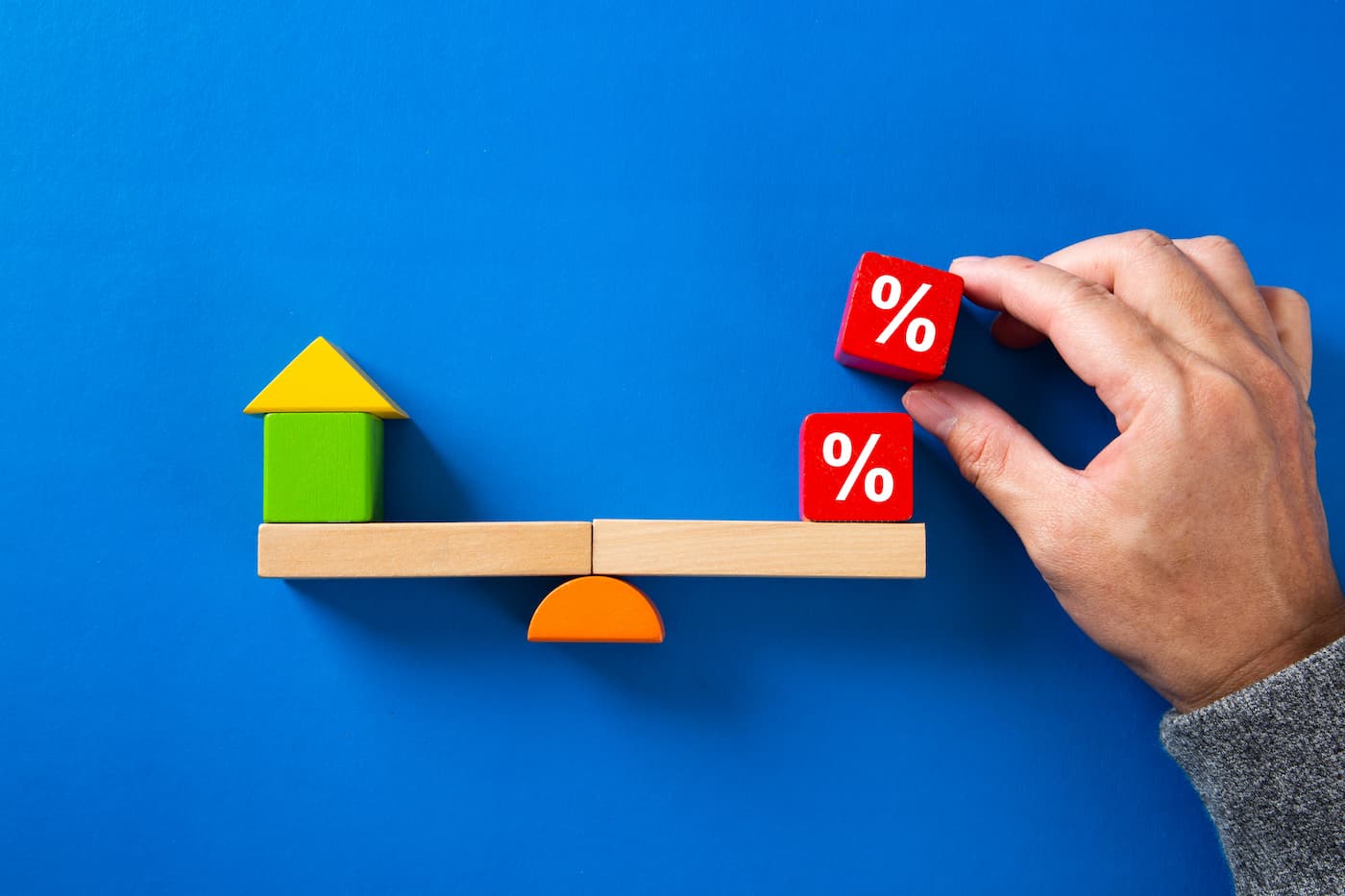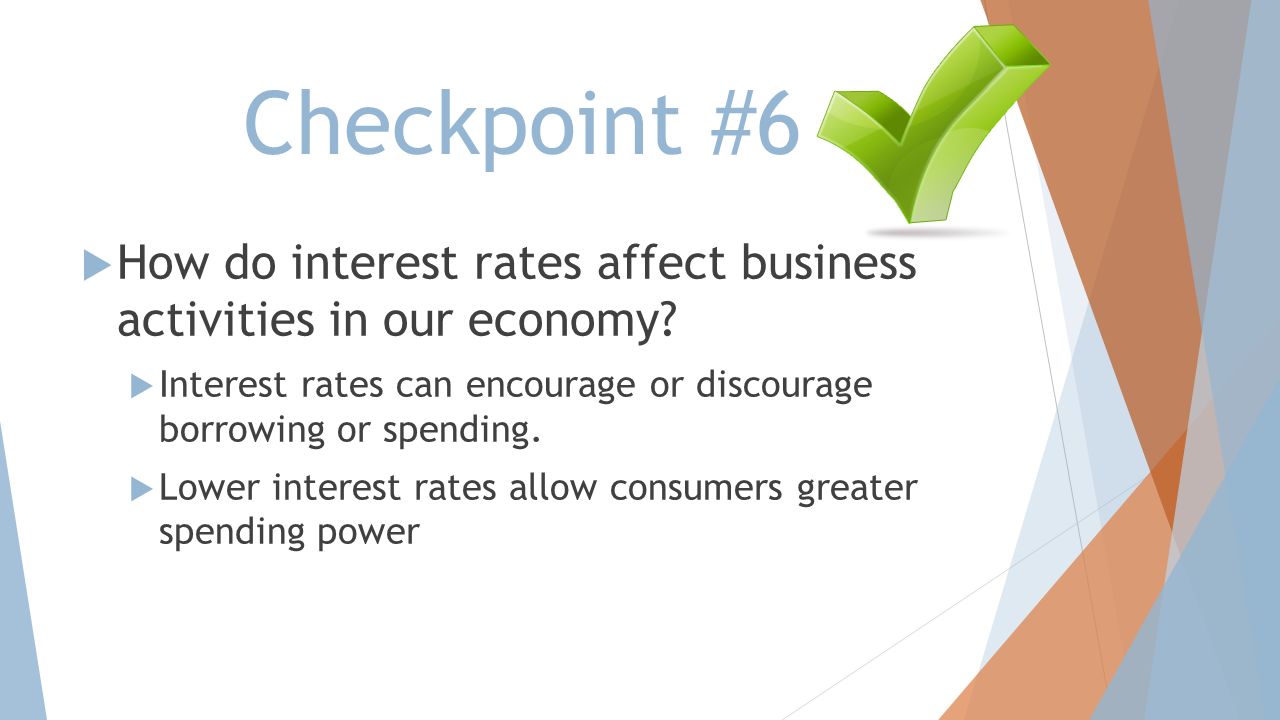

Finance
How Do Interest Rates Affect Investment?
Published: October 16, 2023
Learn how interest rates impact investment decisions and explore the intricate relationship between finance and interest rates.
(Many of the links in this article redirect to a specific reviewed product. Your purchase of these products through affiliate links helps to generate commission for LiveWell, at no extra cost. Learn more)
Table of Contents
Introduction
Interest rates play a pivotal role in the world of finance. They have a profound impact on various aspects of the economy, including investment. Whether you are an individual investor, a small business owner, or a multinational corporation, understanding the relationship between interest rates and investment is crucial for making informed financial decisions.
When we talk about interest rates, we are referring to the cost of borrowing money or the return on investment for lending money. The central banks, such as the Federal Reserve in the United States, have the authority to adjust interest rates to manage economic stability and control inflation.
In this article, we will dive deeper into how interest rates affect investment. We will explore the relationship between the two, examine the impact of lower and higher interest rates on investment, and consider the factors that influence this relationship.
Whether you are considering purchasing a new home, starting a business, or investing in stocks and bonds, understanding how interest rates can affect your investment decisions is fundamental. So, let’s take a closer look at the intricacies of this dynamic relationship between interest rates and investment.
Interest Rates and Investment
Interest rates have a direct impact on investment decisions. When interest rates are low, borrowing becomes more affordable, enticing individuals and businesses to spend and invest. On the other hand, when interest rates are high, borrowing becomes more expensive, leading to a decrease in investment activity.
Investment decisions are influenced by a range of factors, including expected returns, market conditions, and risk appetite. However, interest rates play a significant role in shaping these decisions. They affect the cost of borrowing, the opportunity cost of investment, and the expected rate of return.
For individuals, low interest rates can encourage borrowing for various purposes, such as purchasing homes, cars, or funding education. This increased borrowing stimulates demand and drives economic growth. Moreover, low interest rates also make it more attractive to invest in assets such as stocks and bonds, as the potential returns outweigh the interest costs.
Similarly, businesses are more likely to invest in expansion or capital projects when interest rates are low. Lower borrowing costs reduce the financial burden of taking on debt and allow companies to invest in new technologies, equipment, or hiring additional staff. This, in turn, can lead to increased production, job creation, and economic growth.
Conversely, high interest rates tend to have a dampening effect on investment. When borrowing becomes expensive, individuals and businesses are less inclined to take on debt. The cost of servicing loans rises, which reduces the available funds for investment. Higher interest rates also tend to discourage spending and consumption, as individuals have to allocate more of their income towards debt payments.
Moreover, high interest rates make alternative investments, such as fixed-income securities, more attractive. Investors can earn higher returns from relatively safer investments, like government bonds, without taking on the additional risk associated with investment in stocks or real estate.
In summary, interest rates directly impact investment decisions. Low interest rates stimulate borrowing, investments, and economic growth, while high interest rates have the opposite effect, discouraging borrowing and investment activity. Understanding this relationship is vital for individuals and businesses to navigate the financial landscape effectively.
Relationship between Interest Rates and Investment
The relationship between interest rates and investment is complex and multifaceted. It is influenced by several factors, including market conditions, investor sentiment, and the overall state of the economy. Changes in interest rates can have both immediate and long-term effects on investment activity.
When interest rates decrease, the cost of borrowing money becomes cheaper. This can lead to an increase in investment as individuals and businesses take advantage of the lower borrowing costs. Lower interest rates can make projects more financially feasible, as the reduced cost of capital improves the potential return on investment.
Additionally, lower interest rates can spur demand for real estate and other assets, as they become more affordable to finance. This can lead to increased investment in the construction and housing sectors. It can also drive up property prices, resulting in capital appreciation for existing property owners.
Conversely, when interest rates rise, borrowing becomes more expensive, which can dampen investment activity. Higher borrowing costs can make previously attractive investment projects less financially viable, reducing the incentive to invest. Businesses may put expansion plans on hold or delay capital investments in response to higher interest rates.
Rising interest rates can also impact the stock market. Investors may become less willing to take on the risk associated with stocks when they can earn higher returns from relatively safer fixed-income securities. This shift in investor preference can cause stock prices to decline, reducing the appetite for new equity issuances and initial public offerings (IPOs).
It is important to note that the relationship between interest rates and investment is not linear. The impact of interest rate changes on investment can vary depending on the economic environment and the specific industry or sector. In times of economic downturn or uncertainty, the relationship may become less predictable, as investors may prioritize capital preservation over growth-oriented investments.
Overall, the relationship between interest rates and investment is intertwined and sensitive to changes in market conditions. Lower interest rates generally stimulate investment activity, while higher interest rates tend to have a restraining effect. Monitoring interest rate trends and their potential impact on investment is crucial for investors and businesses alike.
Effect of Lower Interest Rates on Investment
Lower interest rates can have a significant impact on investment activity, stimulating economic growth and encouraging individuals and businesses to invest in various sectors. When interest rates are low, borrowing costs decrease, making it more affordable for individuals and businesses to take on debt and invest in projects.
One of the primary effects of lower interest rates is increased borrowing. Individuals may be more inclined to borrow money to make major purchases, such as homes or cars. Lower borrowing costs reduce the monthly payment burden, making these investments more accessible and attractive.
Lower interest rates also incentivize businesses to pursue expansion plans and invest in capital projects. With reduced borrowing costs, companies have a greater opportunity to fund new technologies, equipment upgrades, and innovative ventures. This investment can lead to productivity gains, increased output, and job creation.
Real estate is another sector that benefits from lower interest rates. When borrowing costs are low, it becomes more affordable to finance the purchase of property. This increased demand for real estate can drive up property prices, providing potential capital gains for existing property owners.
Furthermore, lower interest rates encourage investments in the stock market and other financial assets. As the returns on fixed-income securities, such as bonds and savings accounts, decrease, investors may seek higher returns from riskier assets, such as stocks. This can lead to increased demand and higher prices in the stock market, benefiting equity investors.
Lower interest rates also impact the cost of capital for businesses. When borrowing costs decrease, the cost of financing new projects or expansion plans decreases as well. This makes investment projects more financially feasible, as the potential return on investment improves.
Additionally, lower interest rates can lead to currency depreciation. When interest rates in a particular country are lower compared to other countries, investors may move their funds to seek higher returns elsewhere. This capital outflow can put downward pressure on the country’s currency. A weaker currency can make a country’s exports more competitive, boosting industries that heavily rely on exports.
In summary, lower interest rates have a positive impact on investment by making borrowing more affordable and increasing the potential return on investment. It stimulates borrowing for both individuals and businesses and encourages investment in real estate, the stock market, and other financial assets. The overall effect is increased economic activity, job creation, and potential capital gains.
Effect of Higher Interest Rates on Investment
Higher interest rates can have a dampening effect on investment activity, deterring individuals and businesses from borrowing and investing. When interest rates increase, the cost of borrowing money rises, making it more expensive for individuals and businesses to finance projects and make investments.
One of the primary effects of higher interest rates is a decrease in borrowing. As the cost of borrowing increases, individuals and businesses may be less inclined to take on debt for major purchases or investment projects. The higher monthly payments can strain finances and reduce the affordability of loans, leading to a decrease in borrowing and subsequently, a decline in investment.
Higher interest rates also impact the housing market. Mortgage rates directly correlate with prevailing interest rates. When interest rates rise, the cost of financing a home purchase increases, making it more difficult for potential homebuyers to afford new homes. As a result, demand for housing may decrease, causing a decline in construction activity and potentially a drop in property prices.
Furthermore, higher interest rates can have a negative impact on business investment. Increased borrowing costs reduce profitability and the potential return on investment, making certain projects less financially viable. Companies may delay expansion plans, new ventures, or capital investments due to the higher cost of borrowing, which can lead to slower economic growth and job creation.
Higher interest rates can also affect the stock market. When interest rates rise, there is an opportunity cost for investors to hold equities as fixed-income investments, such as bonds, become more attractive given the higher returns. This shift in investor preferences can lead to a decrease in demand for stocks, potentially resulting in a decline in stock prices and reduced investment in equity markets.
In addition, higher interest rates can impact the currency exchange rate. When a country’s interest rates rise relative to other countries, it attracts foreign investors seeking higher returns. This increased demand for the country’s currency can lead to appreciation, making exports more expensive and less competitive in international markets. This can have a negative effect on industries that rely heavily on exports.
In summary, higher interest rates can discourage borrowing and investment activity. It increases the cost of borrowing for individuals and businesses, making loans less affordable. This can lead to decreased demand in the housing market, reduced business investment, potential declines in the stock market, and possible appreciation of the currency. It is essential for investors and businesses to carefully consider the impact of higher interest rates on their investment decisions and adjust their strategies accordingly.
Factors Influencing the Impact of Interest Rates on Investment
The impact of interest rates on investment can vary depending on several factors. These factors shape the overall economic environment and influence investor behavior. Understanding these factors is essential for evaluating the potential impact of interest rate changes on investment decisions.
Economic Conditions: The state of the economy plays a significant role in determining how interest rate changes affect investment. In times of economic expansion, lower interest rates may have a more substantial positive effect on investment, as businesses are more willing to take on debt and invest in growth opportunities. Conversely, during economic downturns or periods of uncertainty, the impact of interest rate changes on investment may be less predictable, with investors becoming more risk-averse and focused on capital preservation.
Inflation Expectations: Inflation expectations can influence the impact of interest rates on investment. Higher inflation expectations may lead to higher interest rates to curb inflationary pressures. In this case, the impact of interest rate changes on investment may be muted, as the higher borrowing costs can offset the potential benefits of lower interest rates. Conversely, lower inflation expectations may allow for lower interest rates, stimulating investment activity.
Business Confidence: The confidence level of businesses can also affect the impact of interest rates on investment. When businesses have a positive outlook on the economy and future growth prospects, they are more likely to invest in expansion plans and capital projects, even when interest rates are higher. Conversely, if businesses have a pessimistic view of the market and anticipate economic challenges, higher interest rates may further discourage investment.
Government Policies: Government policies related to taxation, regulations, and subsidies can influence the impact of interest rates on investment. Favorable policies, such as tax incentives or grants, can offset the increase in borrowing costs due to higher interest rates and encourage investment. Conversely, restrictive policies or increased regulations may discourage investment, regardless of changes in interest rates.
Market Sentiment: Investor sentiment and market conditions can also affect the impact of interest rates on investment. Positive investor sentiment and bullish market conditions can overshadow the impact of higher interest rates, leading to continued investment activity. Conversely, negative sentiment and bearish market conditions can amplify the dampening effect of higher interest rates on investment.
Industry-Specific Factors: The impact of interest rates on investment can also vary across industries. Certain sectors, such as real estate, may be more sensitive to changes in interest rates, while others, like healthcare or technology, may be relatively less affected. The specific dynamics of each industry, including supply and demand factors, regulatory environment, and market cycles, can shape the relationship between interest rates and investment in that sector.
Overall, while interest rates are a crucial determinant of investment decisions, the impact can be influenced by various factors. Economic conditions, inflation expectations, business confidence, government policies, market sentiment, and industry-specific factors all contribute to shaping the relationship between interest rates and investment. Recognizing these factors is important for accurately assessing the potential impact of interest rate changes on investment decisions.
Conclusion
Interest rates have a profound impact on investment decisions and the overall economy. Whether they are low or high, interest rates shape borrowing costs, influence investor behavior, and impact various sectors, such as real estate and the stock market.
Lower interest rates tend to stimulate borrowing and investment. They make borrowing more affordable, encourage individuals and businesses to take on debt, and promote economic growth. Lower rates can lead to increased investment in housing, business expansion, and financial assets.
On the other hand, higher interest rates can have a damping effect on investment activity. They increase borrowing costs, reducing the affordability of loans for individuals and businesses. Higher rates can deter investment in various sectors, including housing, business expansion, and the stock market.
However, the impact of interest rates on investment is not solely determined by their level. Several factors, such as economic conditions, inflation expectations, business confidence, government policies, market sentiment, and industry-specific dynamics, can influence how interest rate changes affect investment decisions.
Therefore, it is important for investors and businesses to carefully monitor and analyze these factors while considering the impact of interest rates on their investment strategies. Understanding the relationship between interest rates and investment empowers individuals and businesses to make informed financial decisions, taking into account the prevailing economic conditions, market sentiment, and industry-specific factors.
In conclusion, interest rates play a critical role in shaping investment decisions. The relationship between interest rates and investment is complex, with various factors influencing the impact of interest rate changes. By staying informed and understanding these dynamics, individuals and businesses can navigate the investment landscape more effectively, optimizing their strategies and achieving their financial goals.














